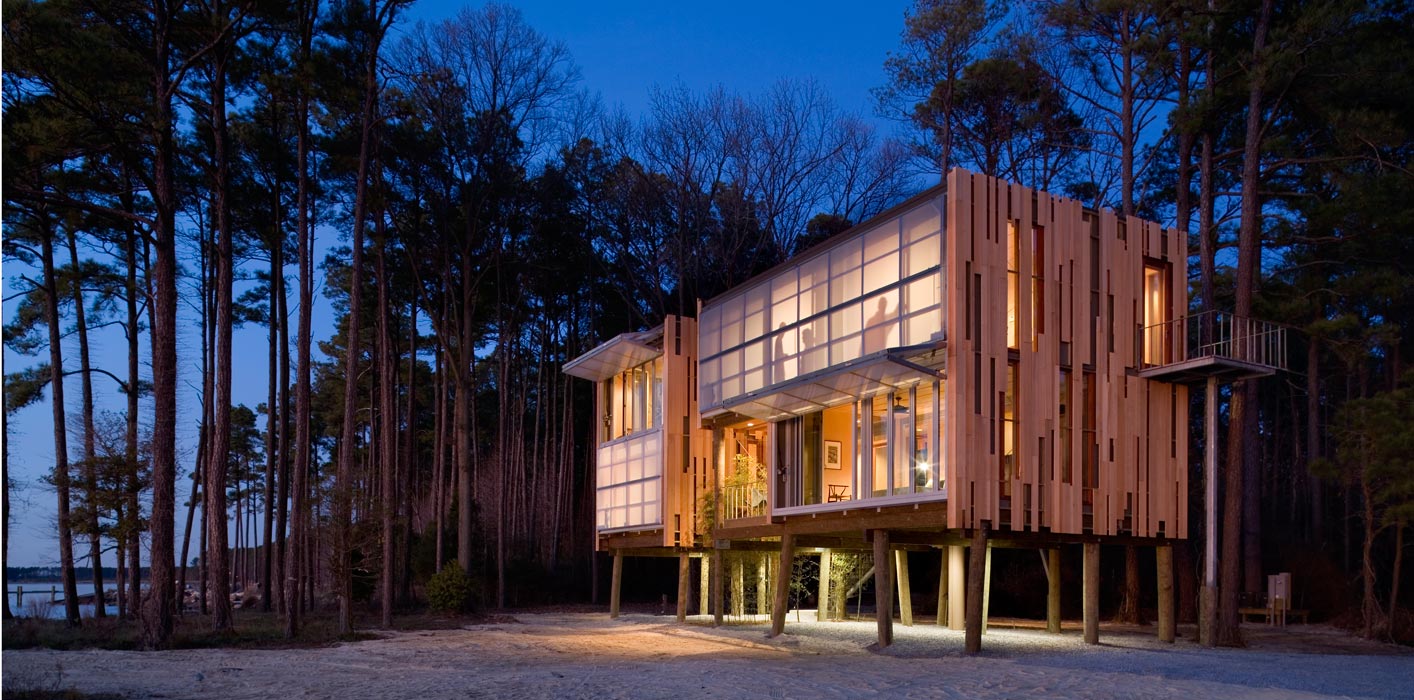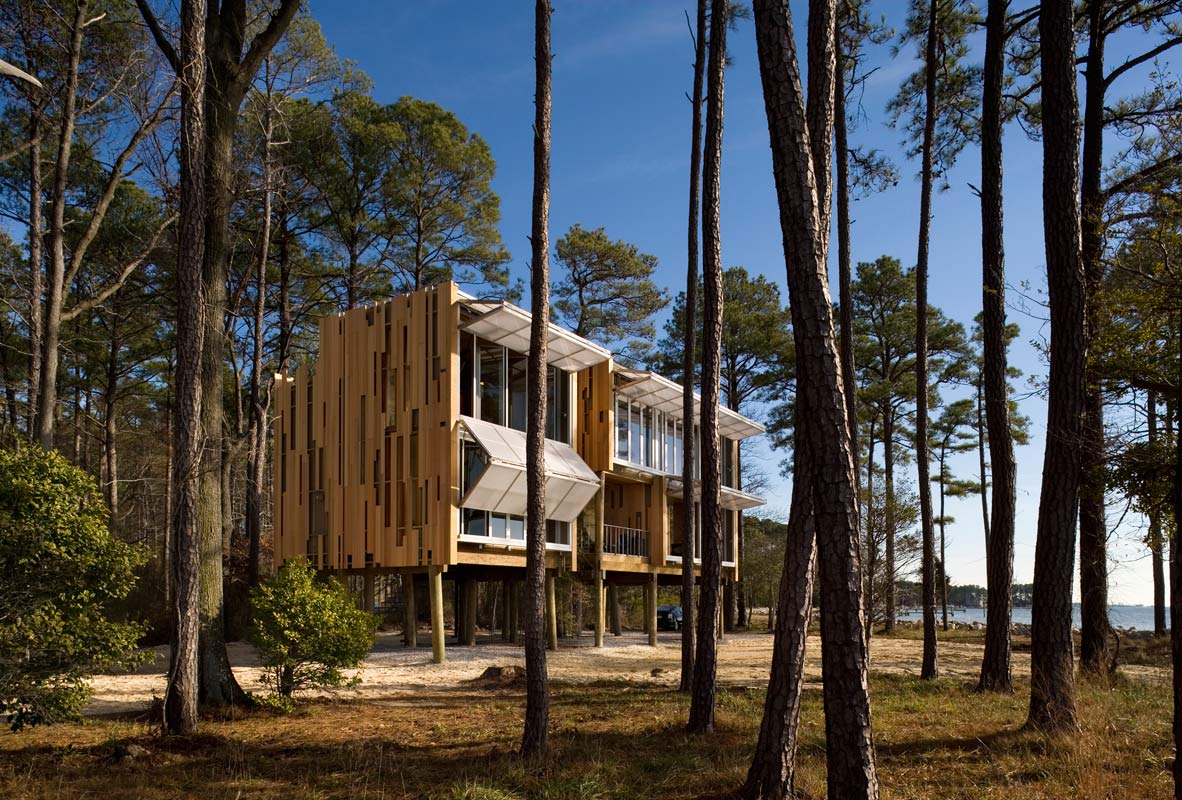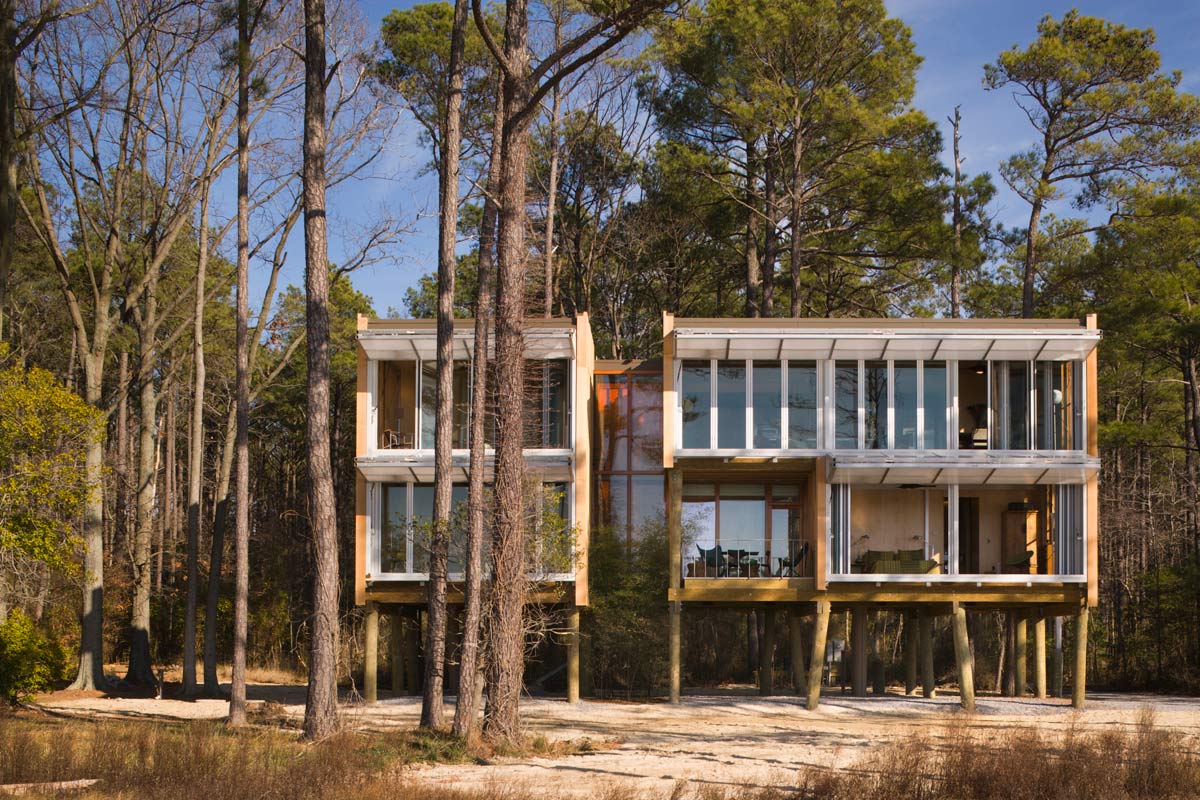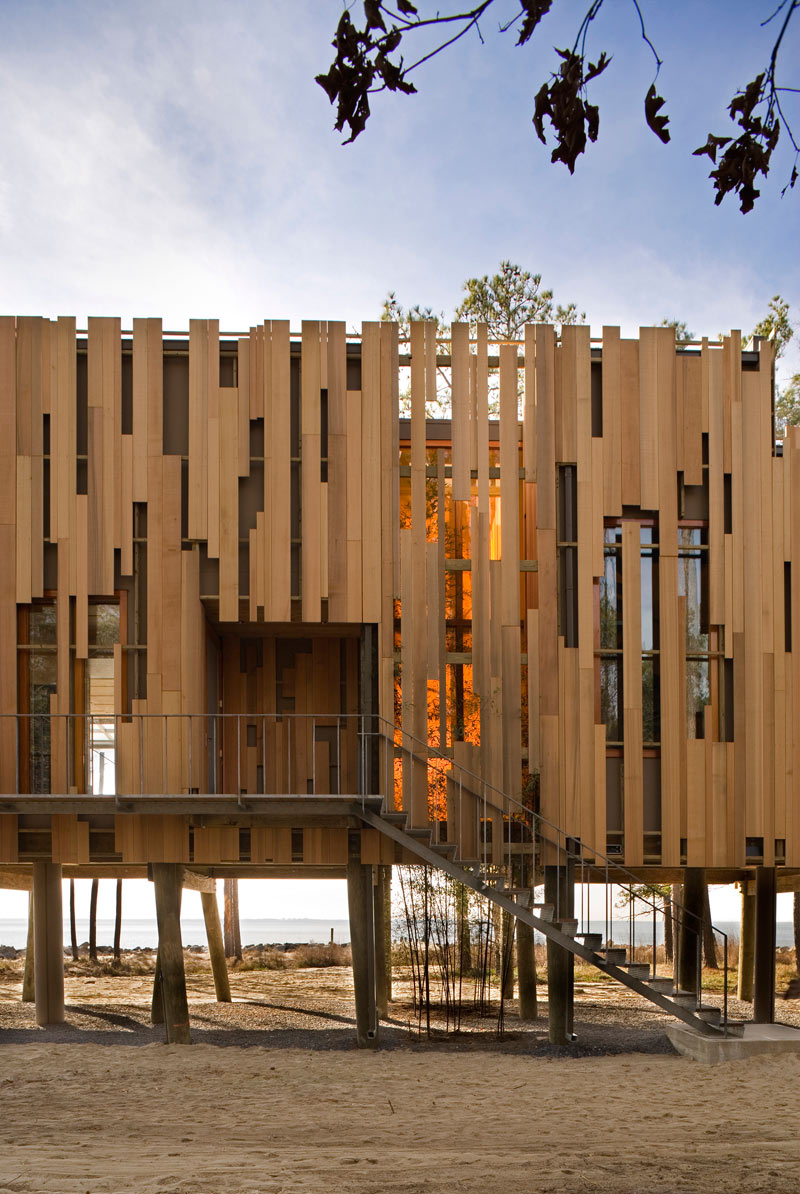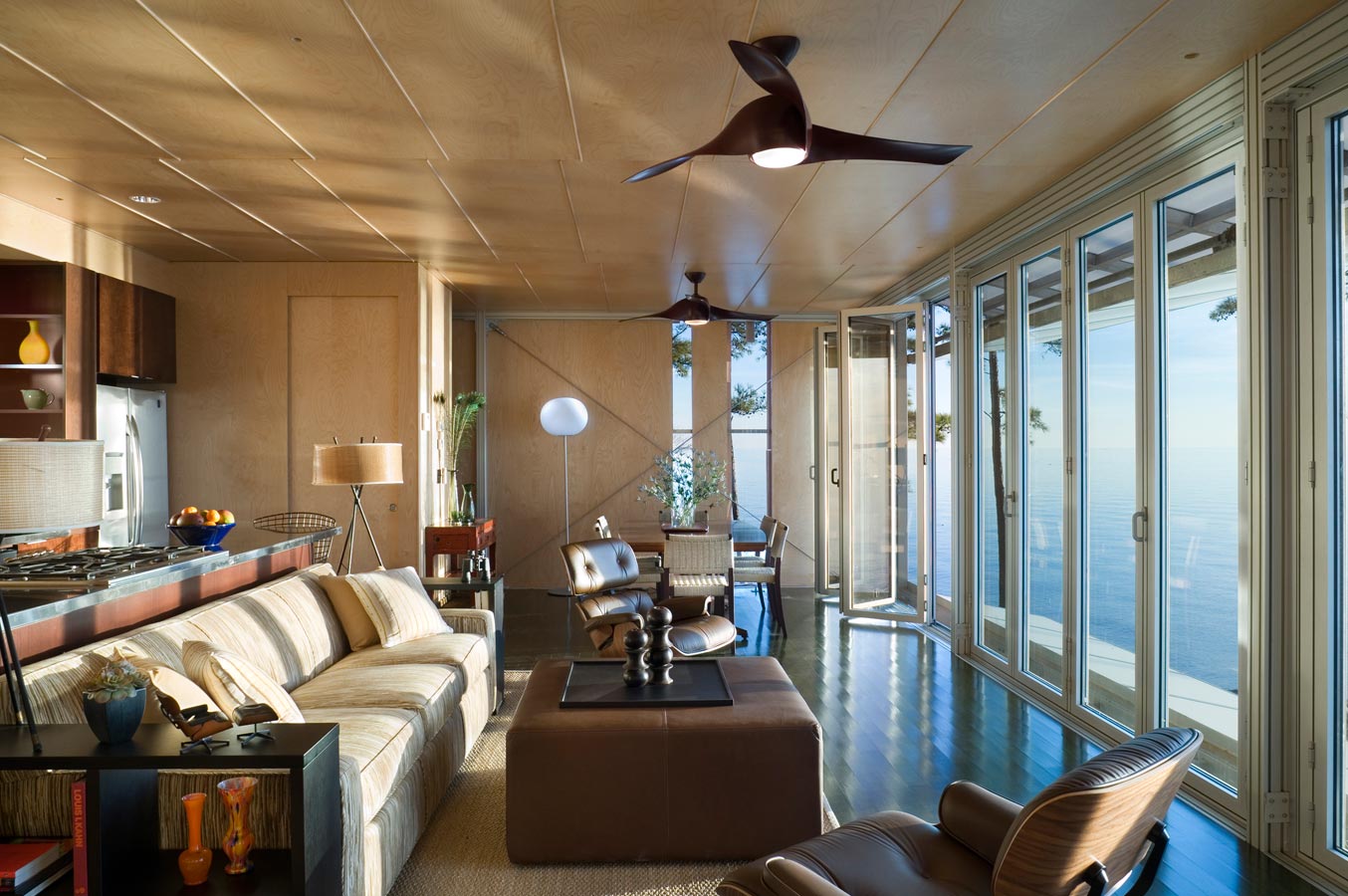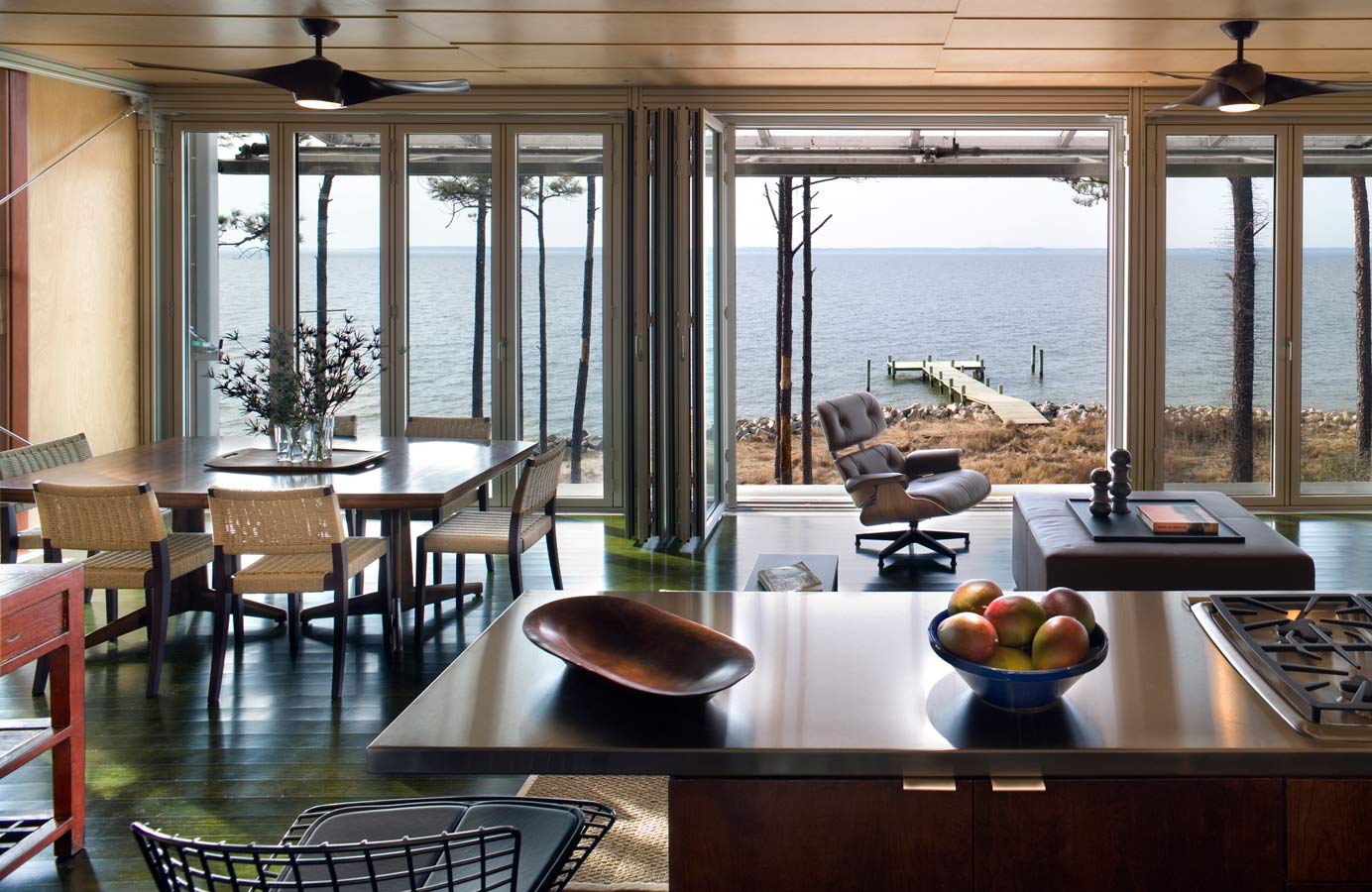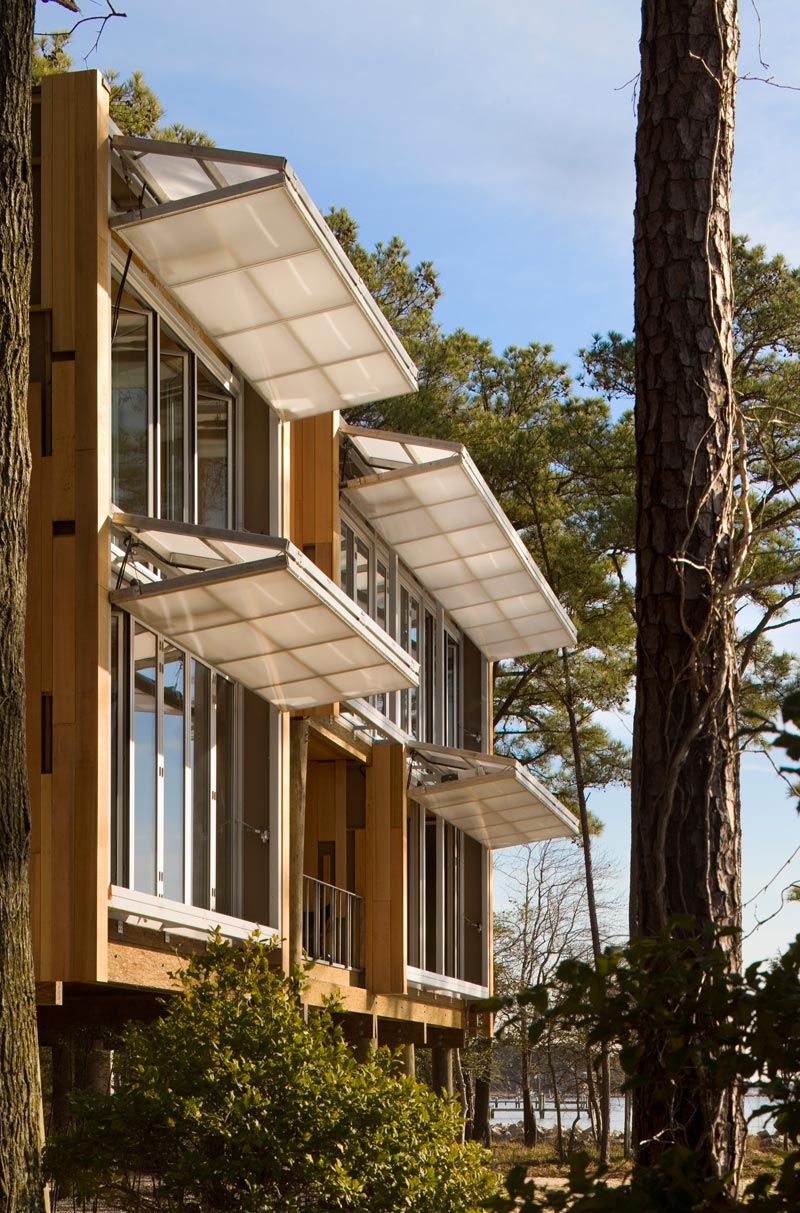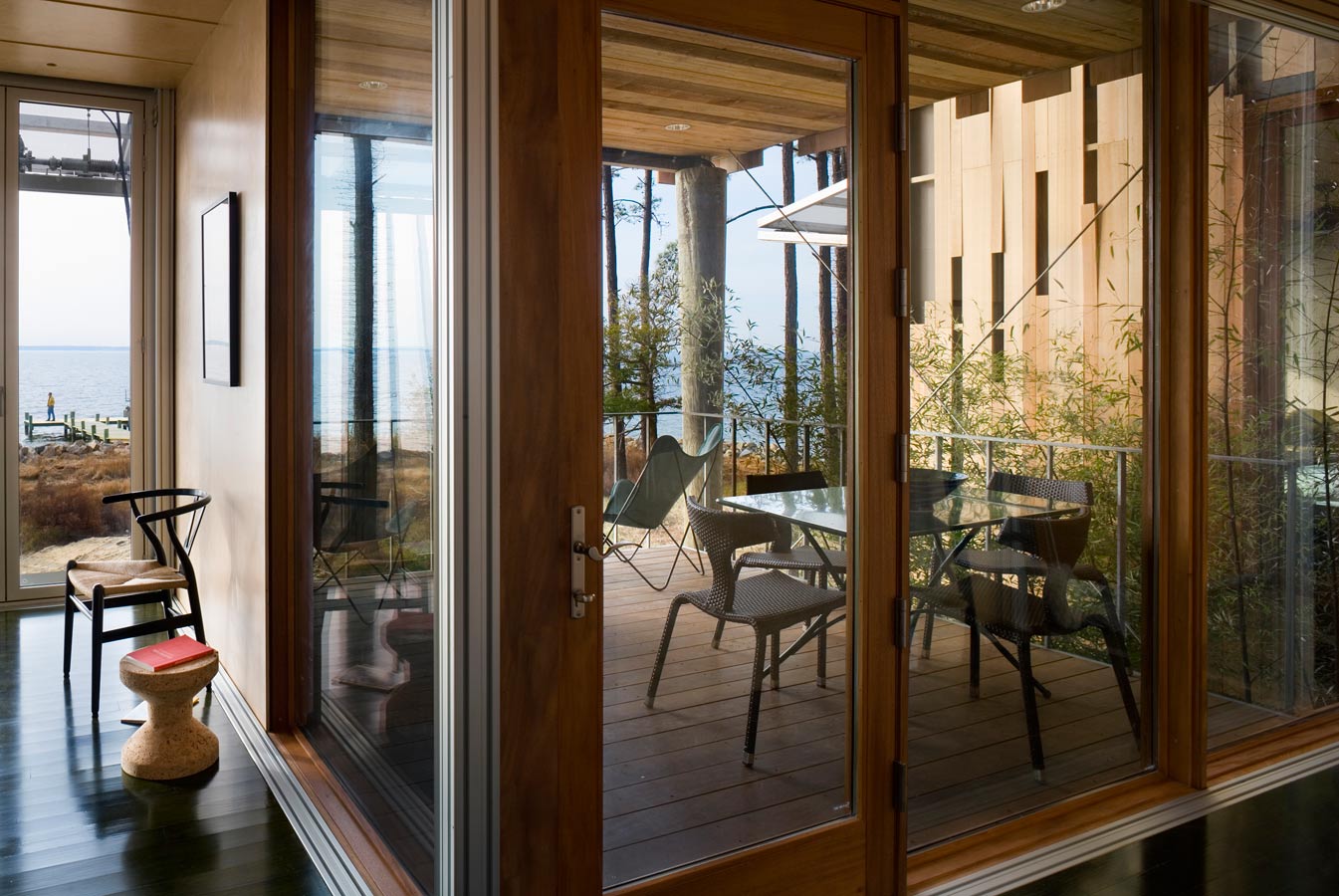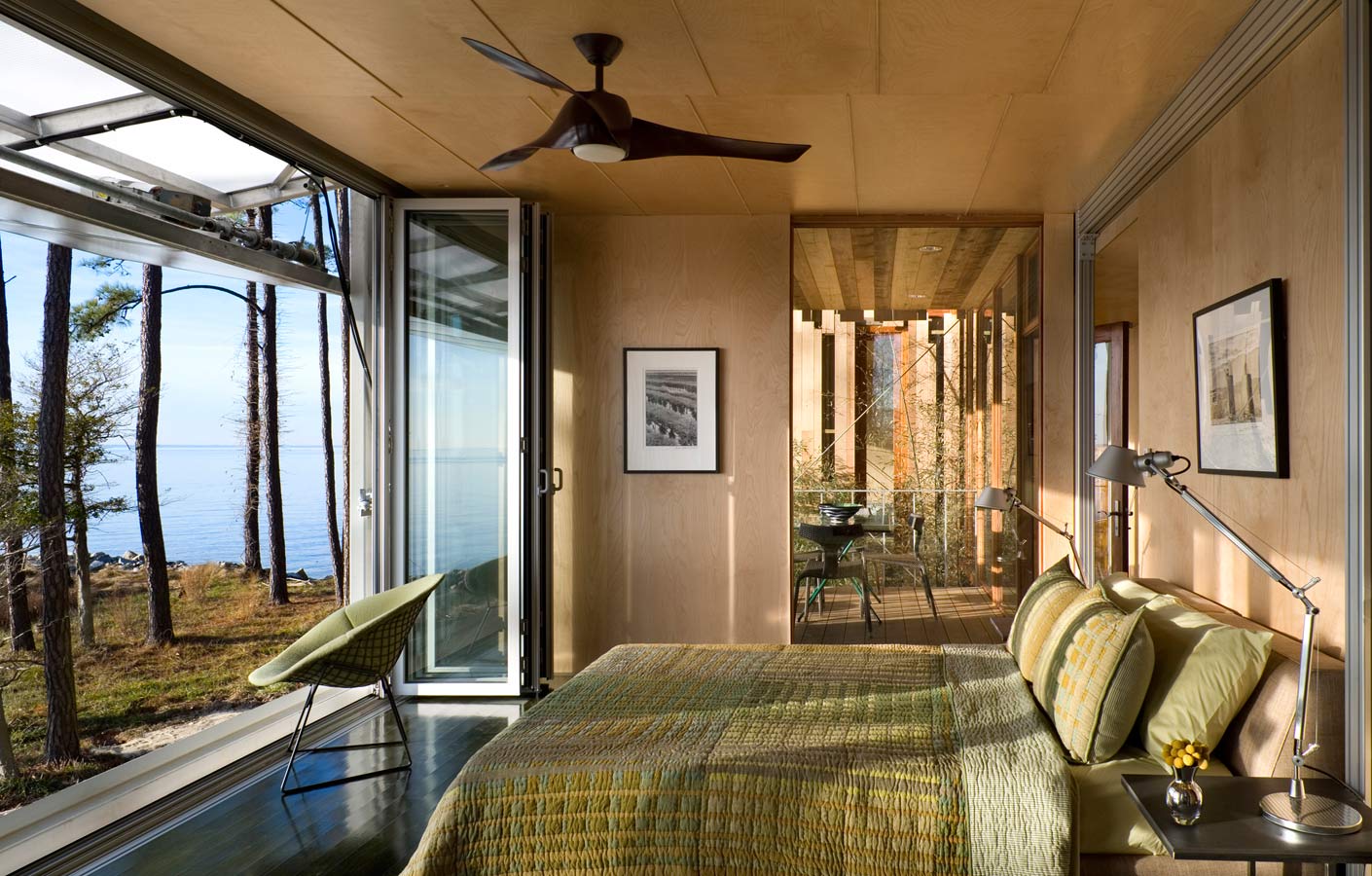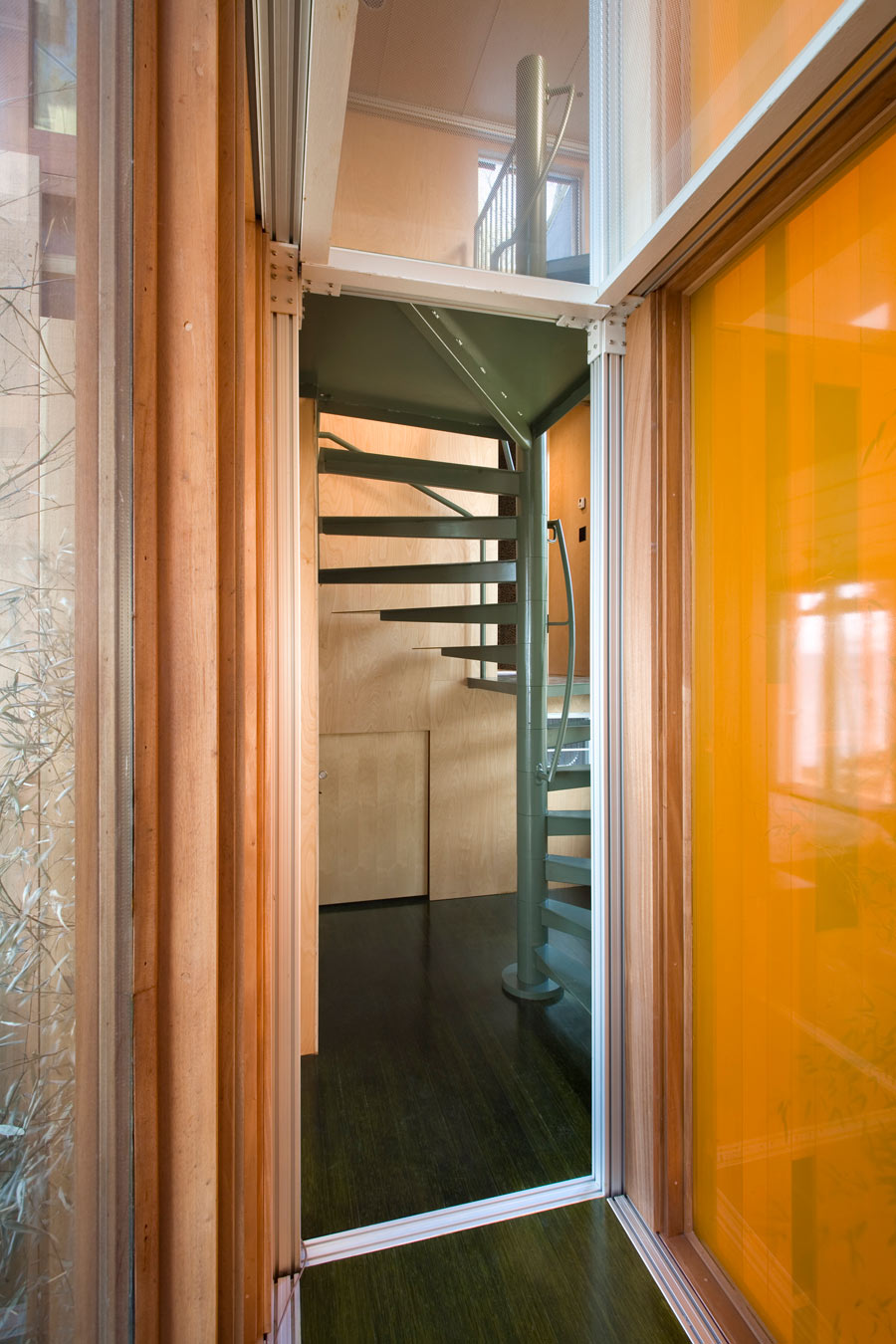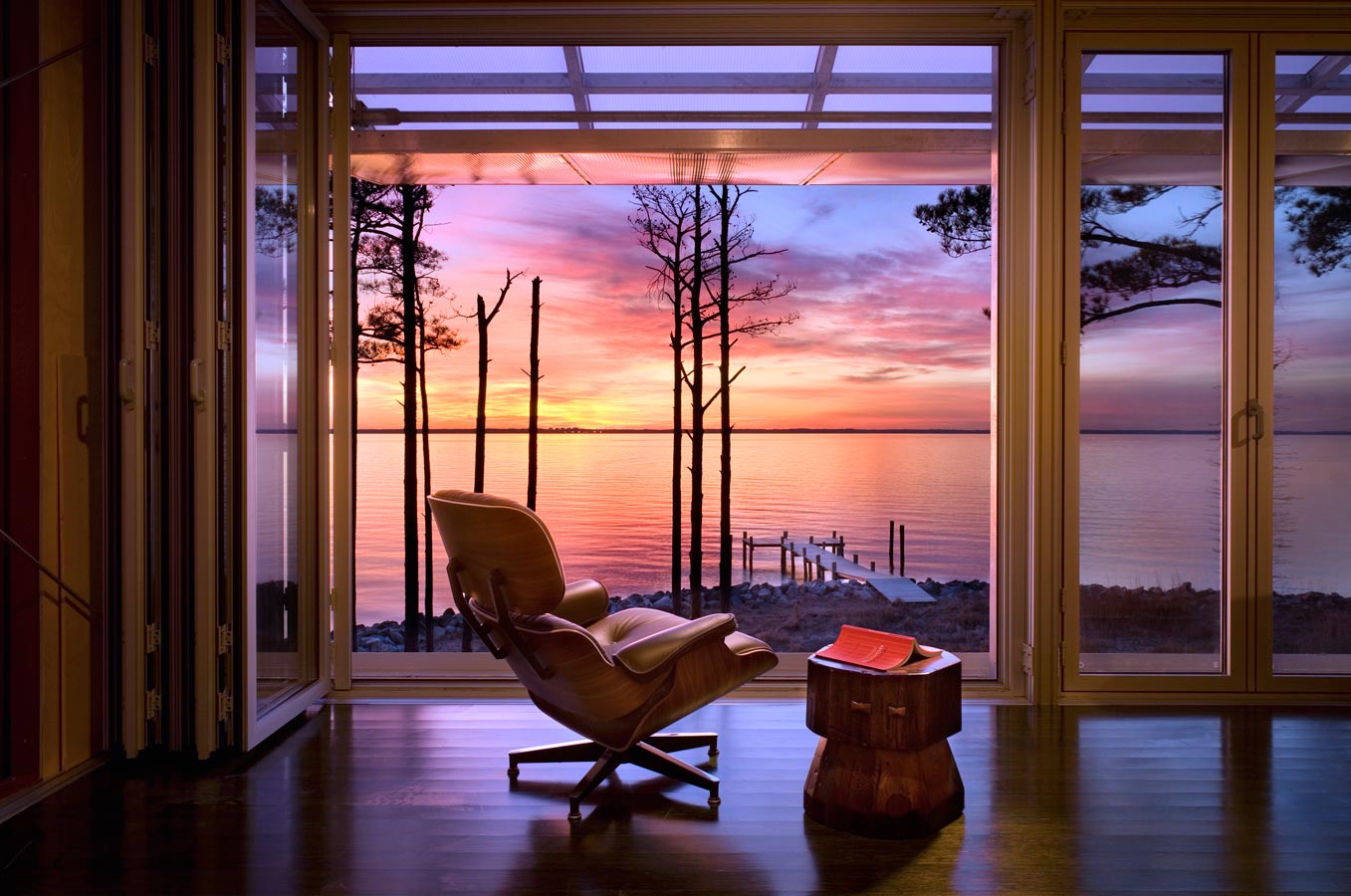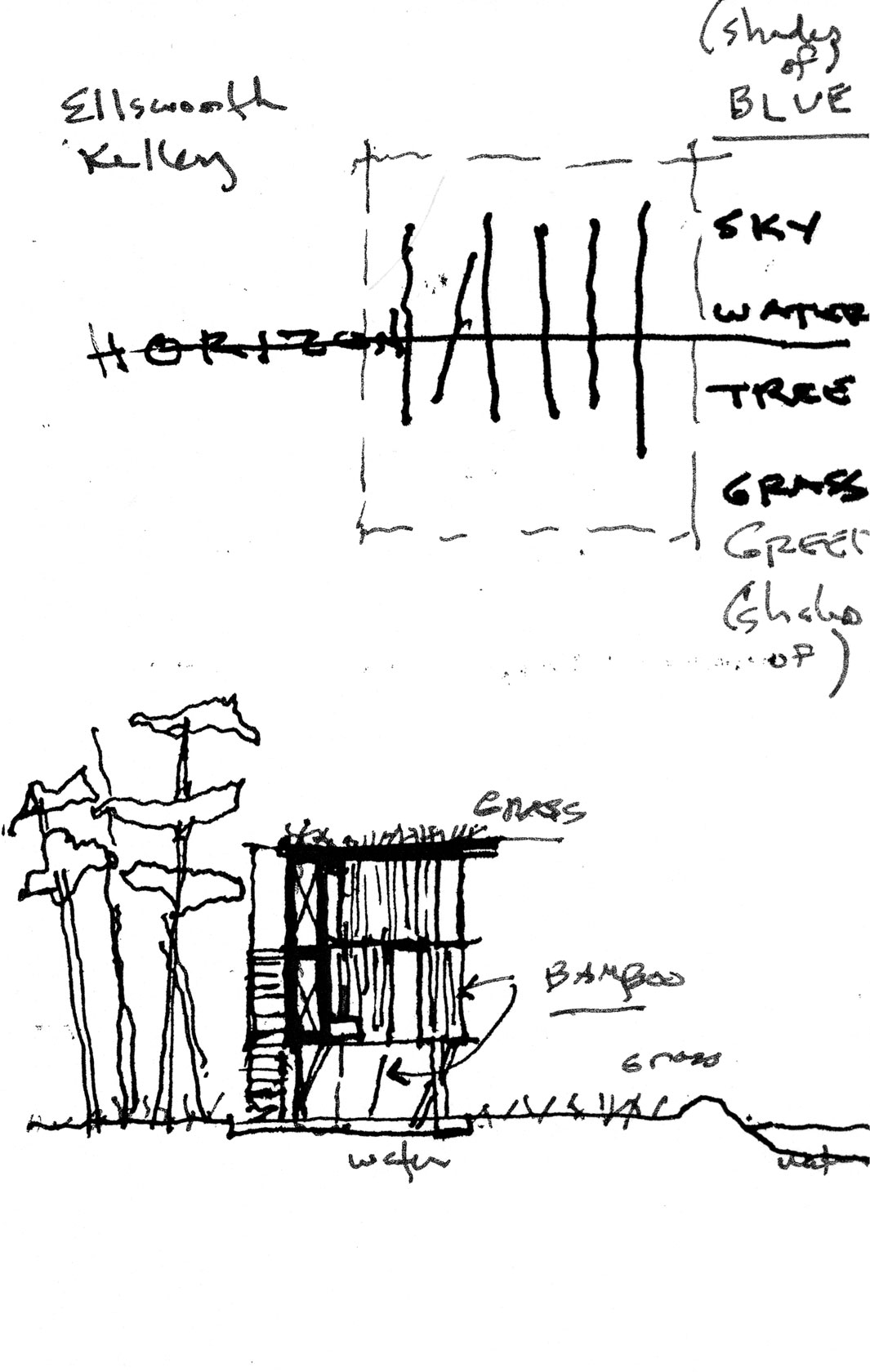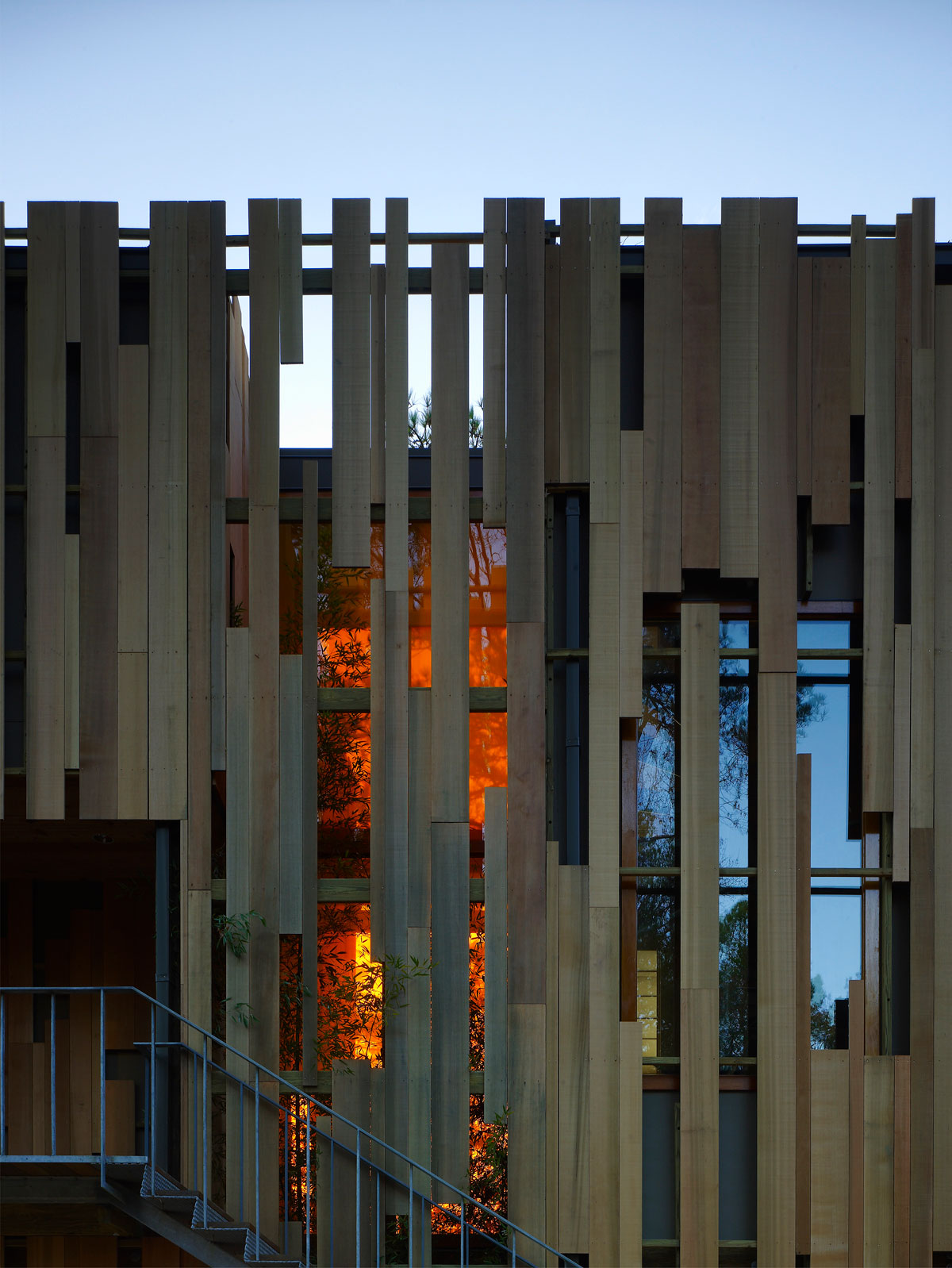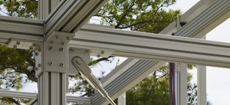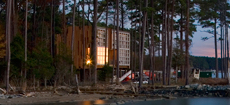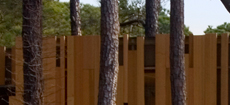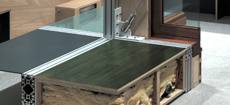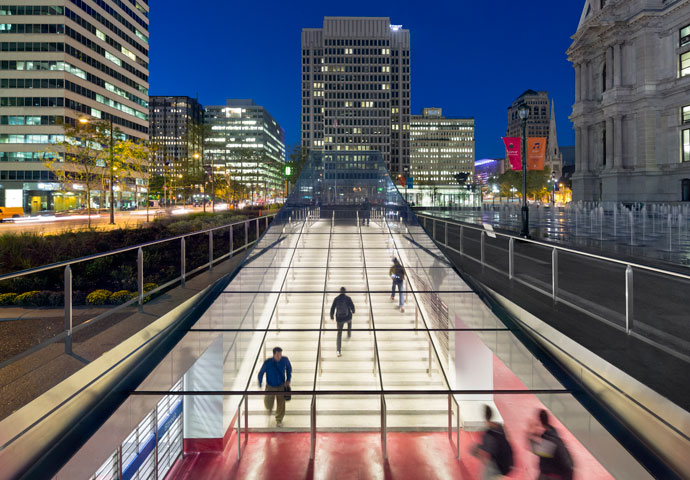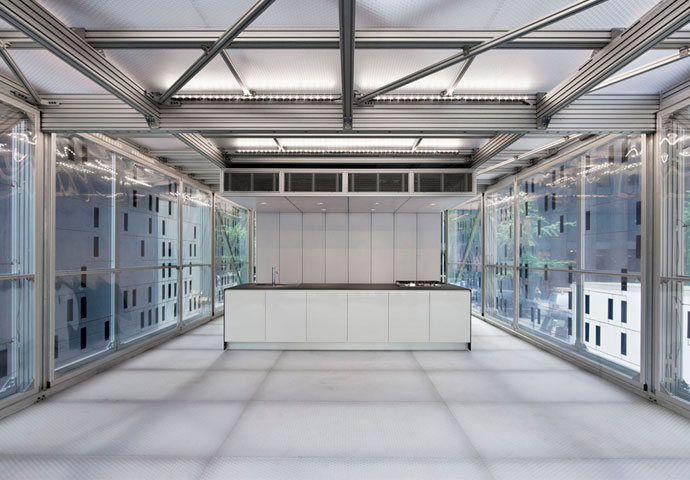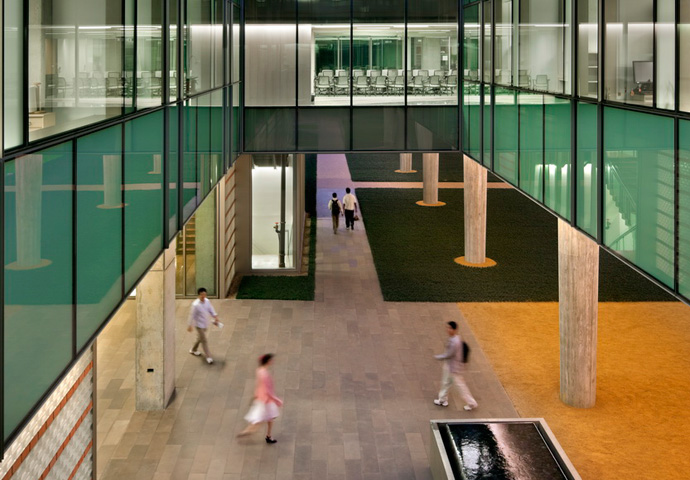How can we holistically transform the way we make architecture, compressing the construction timespan and making use of technology to create a truly sustainable, aesthetically moving shelter?
An early hand-drawn diagram shows the influence of the site on the house's conception.
Loblolly House was inspired by the childhood urge to build tree houses. An effort to bring back the magic of a house in the trees—one that requires climbing up to gain a view—Loblolly House appeals to a primal instinct about how we inhabit space. It also represents a home that is uniquely integrated with its setting among the tall loblolly pines from which it takes its name.
Site
Positioned between a dense grove of pines and a lush foreground of saltmeadow cordgrass leading to the bay, the house is formed about and within the elements of trees, tall grasses, the sea, the horizon, the sky, and the western sun. The skewed piles upon which the foundation rests mimic the form of the forest, fusing the natural elements of this barrier island to architectural form.
Loblolly House also reflects an environmental ethic; by lifting it off the ground, we ensure that it touches the site very lightly. Our desire in conceiving this home was to reimagine what was possible in the realm of building—with the intention to improve the productivity of design and construction, enhance affordability and quality, and do so in an ethical and aesthetically moving manner.
Fabrication
Most houses are built from thousands of parts, which are transported separately to the construction site and pieced together by hand—a process of extraordinary duration, cost, and environmental impact. With Loblolly House, by contrast, we wanted to use integrated assemblies of those parts, fabricated off site, to build a house in an entirely different way. Specification was no longer structured around the 50 divisions of the Construction Specifications Institute traditionally used to organize the multitude of parts. Instead, the conception and detailing were formed about four new elements of architecture: scaffold, cartridge, block, and equipment. The connections between elements were designed to be made using only simple hand tools.
Loblolly House is built on tree-like piles that lift the house off the ground. The platform entry to the second level projects like an osprey nest.
© Halkin Photography LLC
Each element—and its junctures with other elements—was first digitally modeled to an exquisite level of detail. At the time, in 2004, parametric modeling software was in its nascent stages and required significant effort, but its use ensured that elements fabricated simultaneously would fit together perfectly. The assemblies were then fabricated off site, anticipating their attachment to the aluminum scaffold system that would eventually support and connect them. Unlike a traditional building process, in which construction must happen sequentially from the ground up, with Loblolly House, the various elements could be prepared at the same time, shifting 70 percent of the effort to the factory. All of the house's systems were pre-integrated into the floor and ceiling panels, termed smart cartridges, to distribute radiant heating, hot and cold water, waste water, ventilation, and electricity throughout the house.
The orange glow of the footbridge—evoking the setting sun—is visible through the staggered rainscreen siding, which was composed over a photograph of the site to mimic the solids and voids of the forest wall.
© Halkin Photography LLC
Assembly
At the Taylors Island site, the building began with traditional, site-based preparation of the foundation. However, once the aluminum frame was in place, the assembly process could continue apace. Floor and ceiling cartridges and pre-built modules—including entire bathrooms and mechanical blocks—were lifted and fitted into place. Exterior wall panels containing structure, insulation, windows, interior finishes, and a wood rain screen of western red cedar completed the cladding. From the platform up, the house was assembled in less than six weeks.
As you approach Loblolly House from the 800-foot-long drive in the afternoon, when the sun shifts to the west, you can see a mysterious glow at its center: the orange glass of the footbridge connecting the main house to the guest quarters. Like its perch amidst the trees, this is one of the elements of magic to the structure, accentuating the daily ritual of the passing of the sun. With this project, we wanted not only to envision anew the process of design and construction, embedding within it an environmental ethic, but also to create a house that evokes the extraordinary natural world that is its home.


